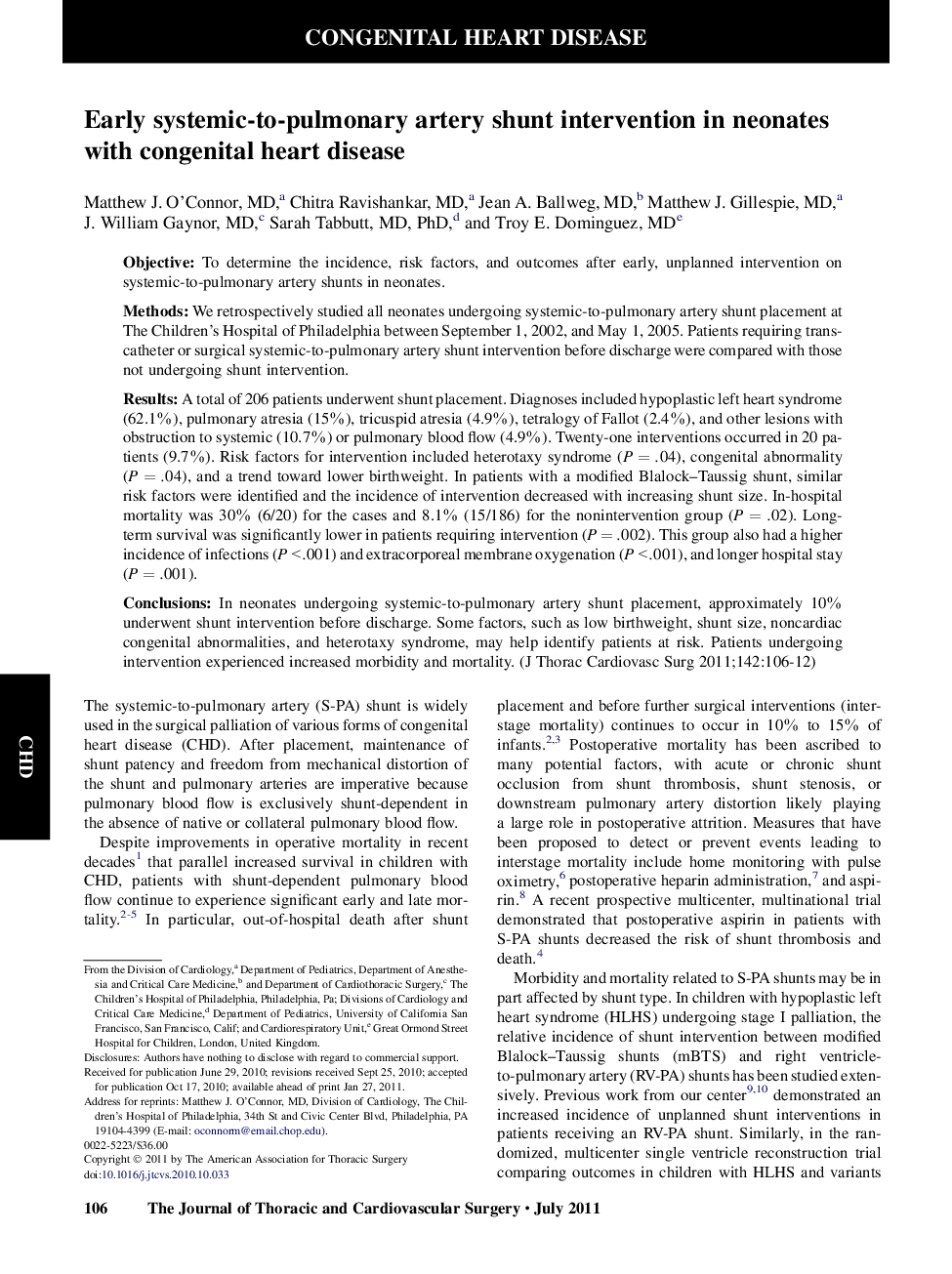| کد مقاله | کد نشریه | سال انتشار | مقاله انگلیسی | نسخه تمام متن |
|---|---|---|---|---|
| 2982505 | 1578647 | 2011 | 7 صفحه PDF | دانلود رایگان |

ObjectiveTo determine the incidence, risk factors, and outcomes after early, unplanned intervention on systemic-to-pulmonary artery shunts in neonates.MethodsWe retrospectively studied all neonates undergoing systemic-to-pulmonary artery shunt placement at The Children’s Hospital of Philadelphia between September 1, 2002, and May 1, 2005. Patients requiring transcatheter or surgical systemic-to-pulmonary artery shunt intervention before discharge were compared with those not undergoing shunt intervention.ResultsA total of 206 patients underwent shunt placement. Diagnoses included hypoplastic left heart syndrome (62.1%), pulmonary atresia (15%), tricuspid atresia (4.9%), tetralogy of Fallot (2.4%), and other lesions with obstruction to systemic (10.7%) or pulmonary blood flow (4.9%). Twenty-one interventions occurred in 20 patients (9.7%). Risk factors for intervention included heterotaxy syndrome (P = .04), congenital abnormality (P = .04), and a trend toward lower birthweight. In patients with a modified Blalock–Taussig shunt, similar risk factors were identified and the incidence of intervention decreased with increasing shunt size. In-hospital mortality was 30% (6/20) for the cases and 8.1% (15/186) for the nonintervention group (P = .02). Long-term survival was significantly lower in patients requiring intervention (P = .002). This group also had a higher incidence of infections (P < .001) and extracorporeal membrane oxygenation (P < .001), and longer hospital stay (P = .001).ConclusionsIn neonates undergoing systemic-to-pulmonary artery shunt placement, approximately 10% underwent shunt intervention before discharge. Some factors, such as low birthweight, shunt size, noncardiac congenital abnormalities, and heterotaxy syndrome, may help identify patients at risk. Patients undergoing intervention experienced increased morbidity and mortality.
Journal: The Journal of Thoracic and Cardiovascular Surgery - Volume 142, Issue 1, July 2011, Pages 106–112